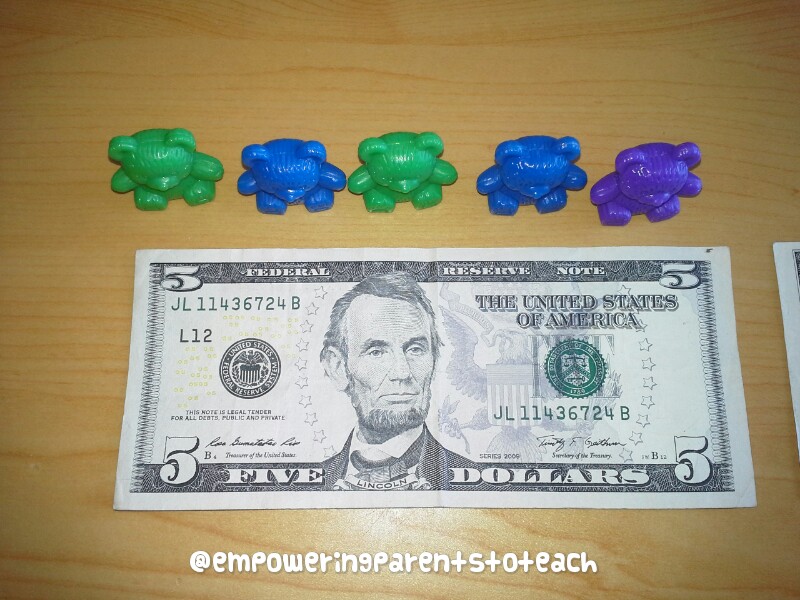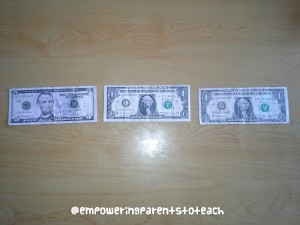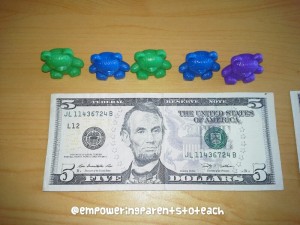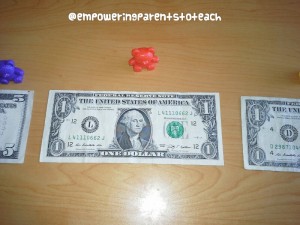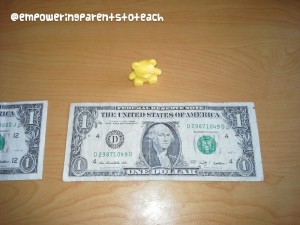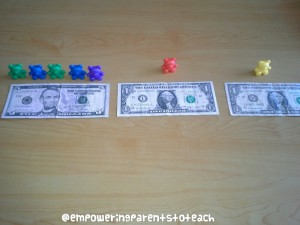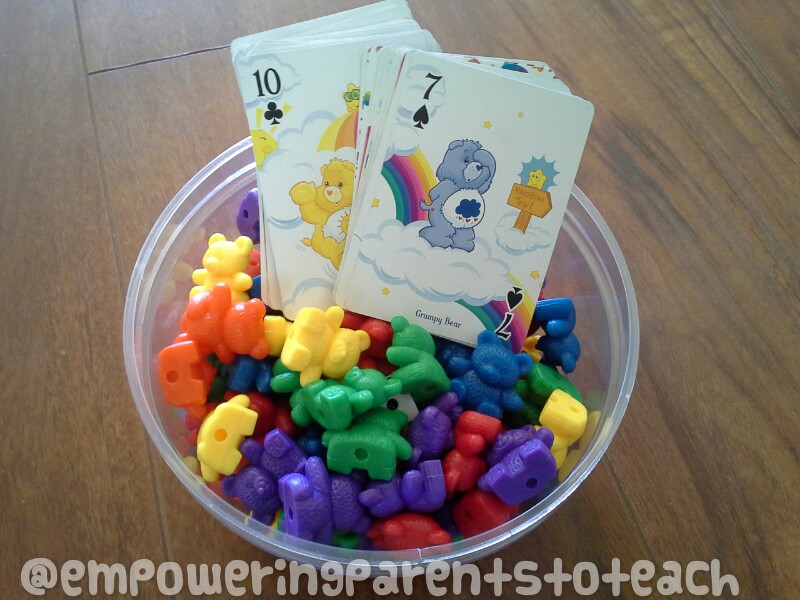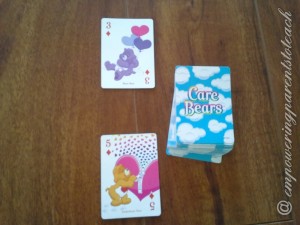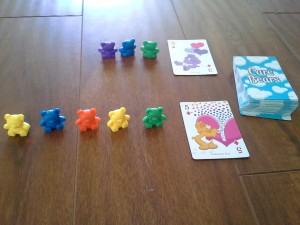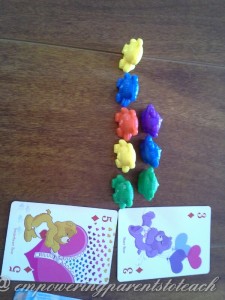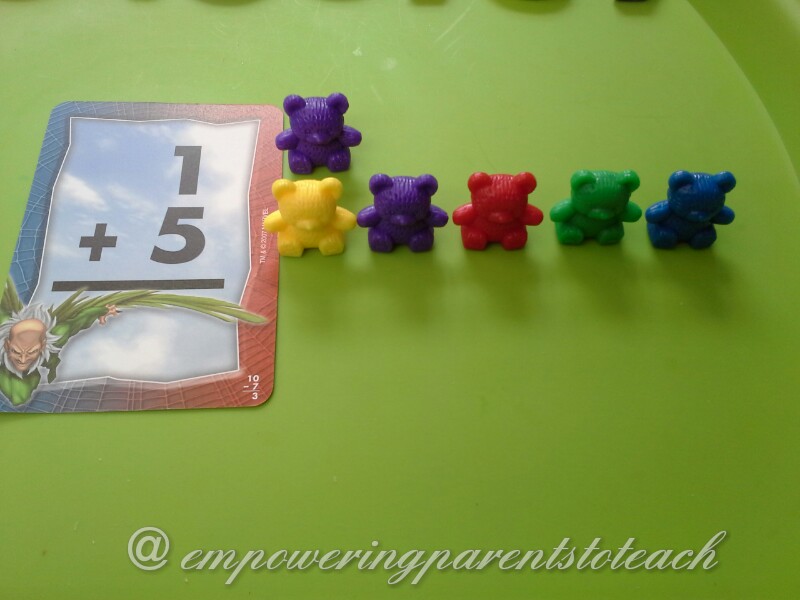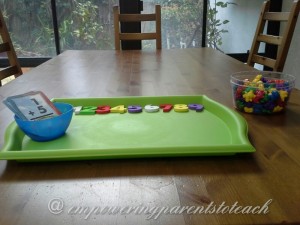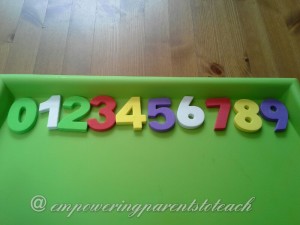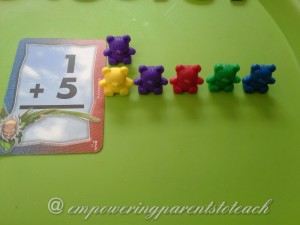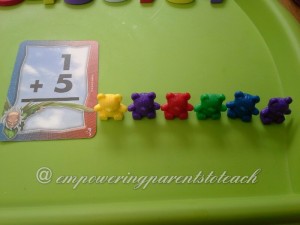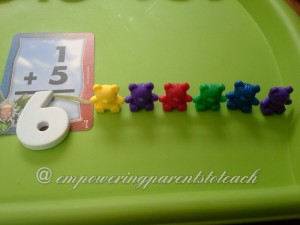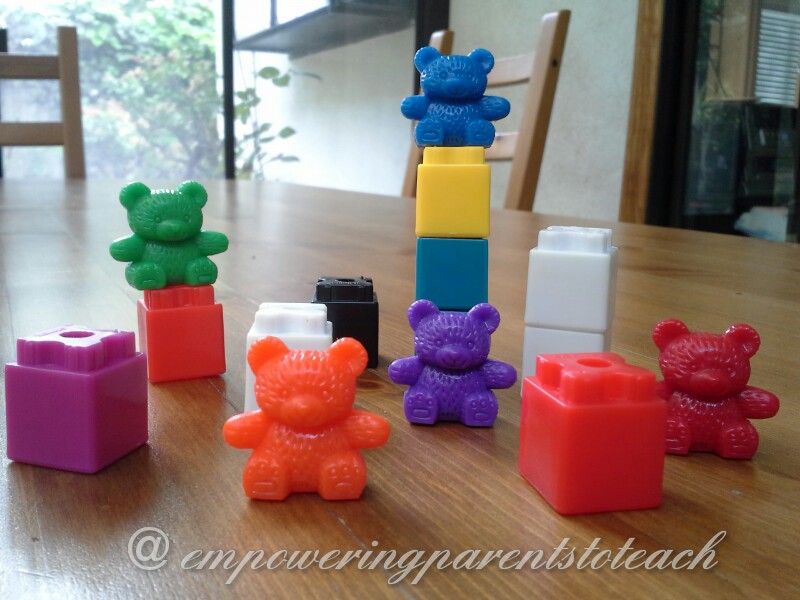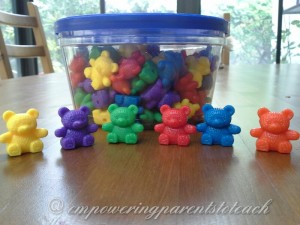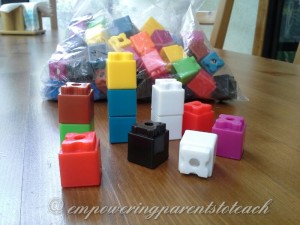My preschooler received some Easter money from his grandmother ($5) and found some hidden inside of an Easter egg ($2). Since we were headed off to Target, he really wanted to bring his money to buy a Skylander. I told him that they cost ten dollars or fifteen dollars. He had to count his money to see if he had enough to purchase one.
Young ones usually count the number of bills. For example, he had a five dollar bill and two one dollar bills. Most of the time, kids that young will count the three bills and say they have three dollars. Ideally, if I had five one dollar bills I could show him that the five one dollar bills was the same as one five dollar bill. But I didn’t have enough bills for that. Math bears came to our rescue again!
Here’s how I would show a young one how to add bills of different denominations using readily available materials:
Step 1:
Place the bills largest to smallest in a line.
Step 2:
Have the child read the number on the first bill. Take out the corresponding number of math bears, i.e. five math bears for a five dollar bill. Teaching Tip: This gives the child a visual, concrete representation of the number on the bill.
Step 3:
Repeat the process of corresponding the math bears to the number on the bills.
Step 3:
Have the child count all the math bears together. Teaching Tip: Have the child start on the left hand side to count. Just like reading, we typically solve math problems left to right. It’s never too early to establish good habits!
In our case, we were not done yet. Remember, he was counting for a purpose. He needed to see if he had enough money to purchase a Skylander. I asked my little guy if seven dollars was more or less than ten dollars. He said, “Less” and immediately started to throw a tantrum because he realized he didn’t have enough money.
Once he calmed down I asked him an extension question, “If you have $7, how many more dollars do you need to make $10?” He responded, “$3″. He can mentally figure out what numbers add up to ten so I did not need to use the math bears to help him solve this. But, if he needed help, I could have put out seven math bears and we could count together how many bears we added to make ten.
Older brother came to this rescue and gave his brother his Easter money- $5. It was super sweet. We counted the money once again and he now had enough money for his new toy!
I love when math can be taught in context for a real purpose! Next time your preschooler or kindergartener wants to buy something, teach him or her how to count money! Evaluate at the end if they have enough for their purchase. ![]()

